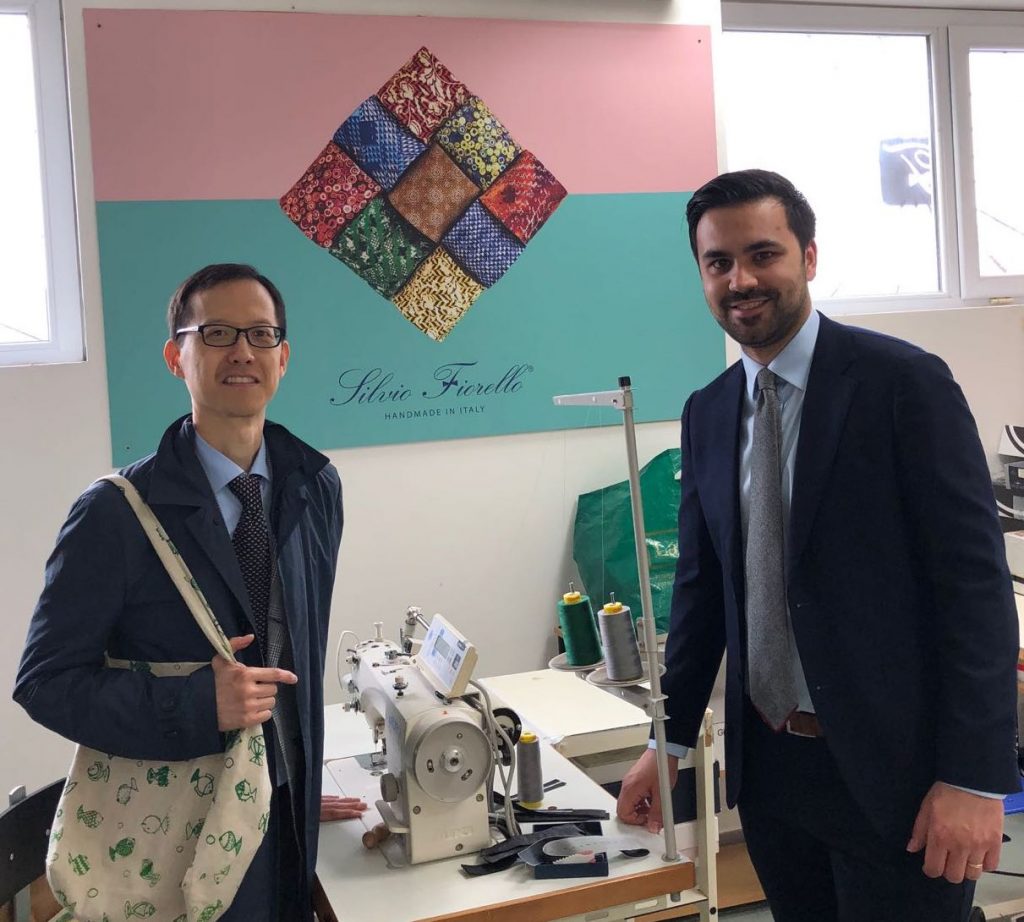
I first came across Silvio Fiorello at last year’s winter Mrket menswear trade show in NYC thanks to the deft introduction by Gigliola at the Italian Trade Agency. She introduced me to Gregory Colaco who was representing the brand at the show. I quickly learned from Gregory that Silvio Fiorello makes their neckwear in northeast Sicily near Enna.
With that knowledge in hand, I naturally made it a priority to visit their workshop a few months later. This was the same trip where I had the opportunity to visit Camicerie Medea. Lillo Scarantino, who runs Medea with his brother, very kindly drove me to the Fiorello workshop in the village of Gagliano Castelferrato.
It’s quite remarkable the artisanal traditions still preserved in small villages throughout the island of Sicily. Fiorello is one of those hidden treasures.

The drive up to the workshop yields fantastic views of the surrounding foothills skirting the Nebrodi mountain range in northeastern Sicily. The workshop is located at the end of a road and sits atop its own little plateau commanding a 360 vista of its bucolic surroundings.
Apart from the views, this is a truly a high-end workshop that has made and continues to make for a select group of luxury brands in menswear. I’m not at liberty to disclose the names of these brands but suffice to say they are very well-known. I imagine these brands turn to a specialist tie maker like Fiorello precisely because they need to offer high-quality neckwear but do not have the expertise in-house.

After our arrival, Mr. Silvio Fiorello, his daughter Nancy and Gregory, whom I met in NYC, took us on a tour through all the critical steps of their necktie production.
Fiorello’s process involves steps and details that go far beyond the manufacture of mass-produced ties. Theirs is not a completely hand sewn tie. Instead, the handwork is reserved elsewhere. For example, workers insert an additional, internal fabric to separate the wool interlining and the silk. This creates a smoother hand feel when tying and untying the necktie. A thoughtful touch that is both aesthetic and functional.
I noted several other artisanal steps in the Fiorello process:
- Fabric cutting. Each tie is individually cut rather than cut in multiple layers which is faster and cheaper.
- Hand-ironing. This preserves the desired volume and loftiness within each tie. Compare this to industrial pressing which flattens the tie like a piece of paper.
- Hand-pinning of tie sections together. This is another aspect of the handwork involved in each tie.
- Variable choice for interlining weight. The interlining weight depends on the weight of silk.
- Quality inspection. Each tie must pass two quality checks (intermediate and final).
In addition to a stock program, Gregory mentioned they have a new made-to-measure program for retailers and brands. Customers can specify width, length and construction type such as 3-fold and 7-fold construction. The latter features an open blade in the back to reveal its construction.
The workshop can also make more complex patchwork ties as well as accommodate requests such as reverse and contrast hand-rolled edges.
If you’re a consumer, brand or retailer looking for both consistency and quality in neckwear, my sense is that Silvio Fiorello merits serious consideration. If you can, certainly visit the workshop. I can’t think of a finer setting for artisanal tie-making anywhere in the world.